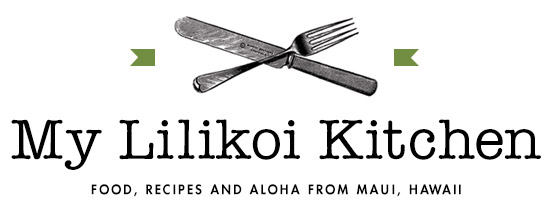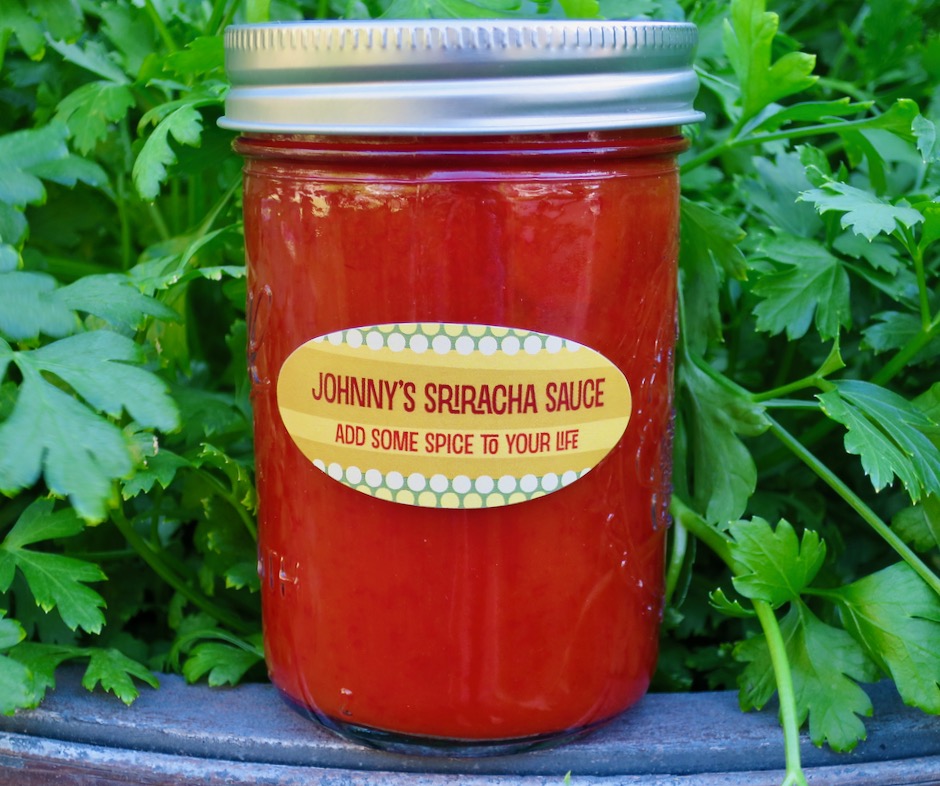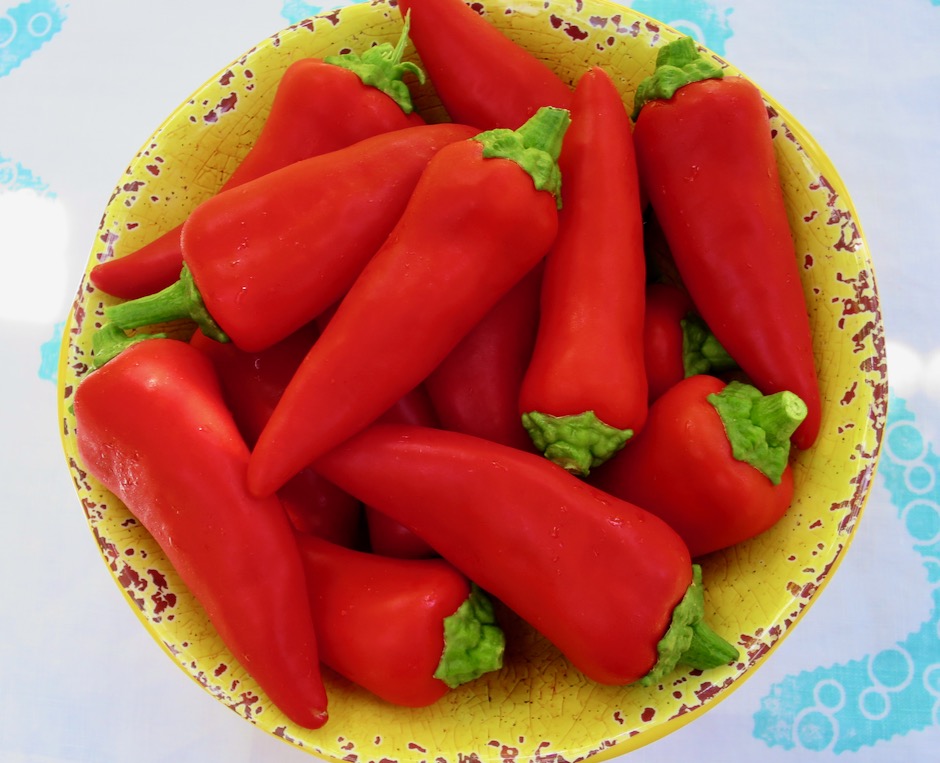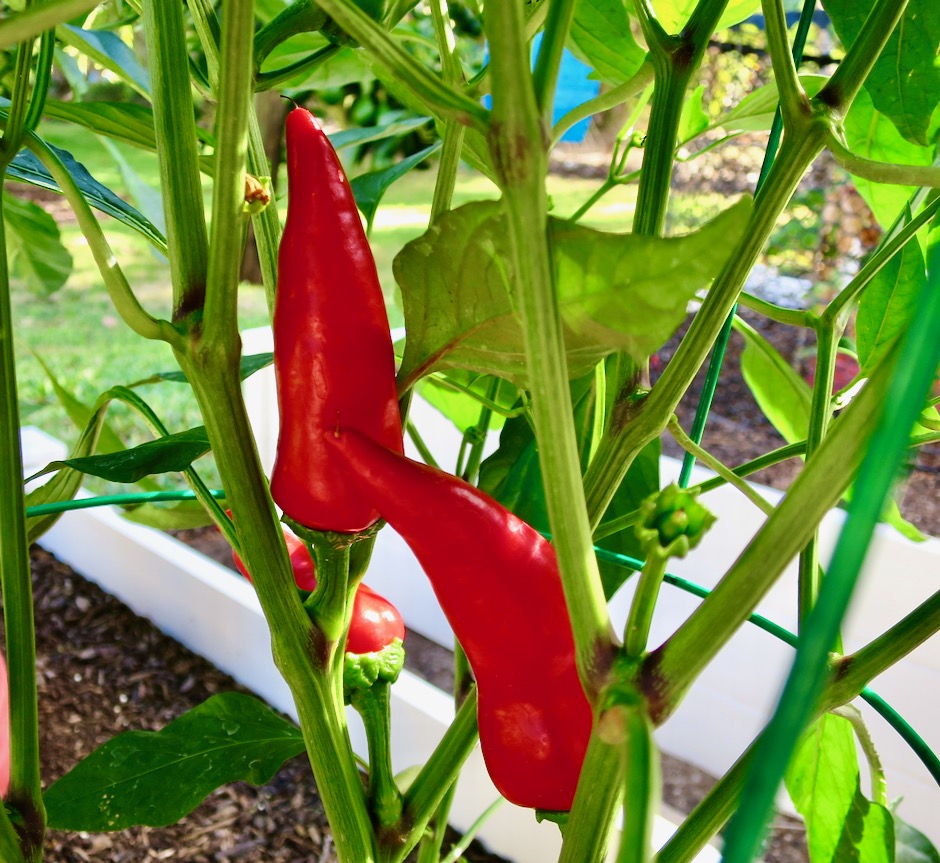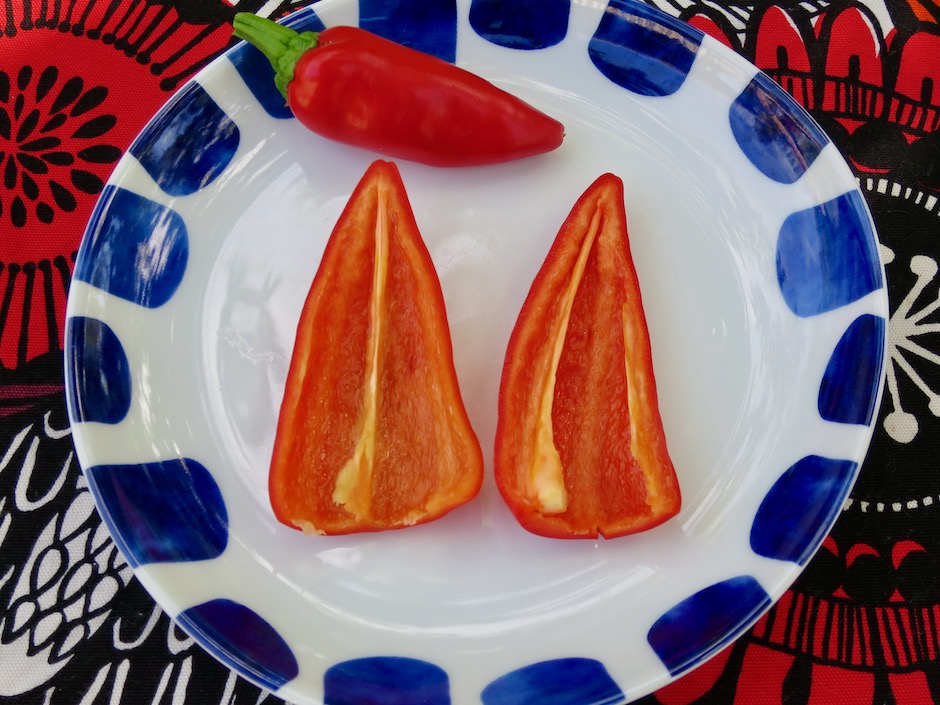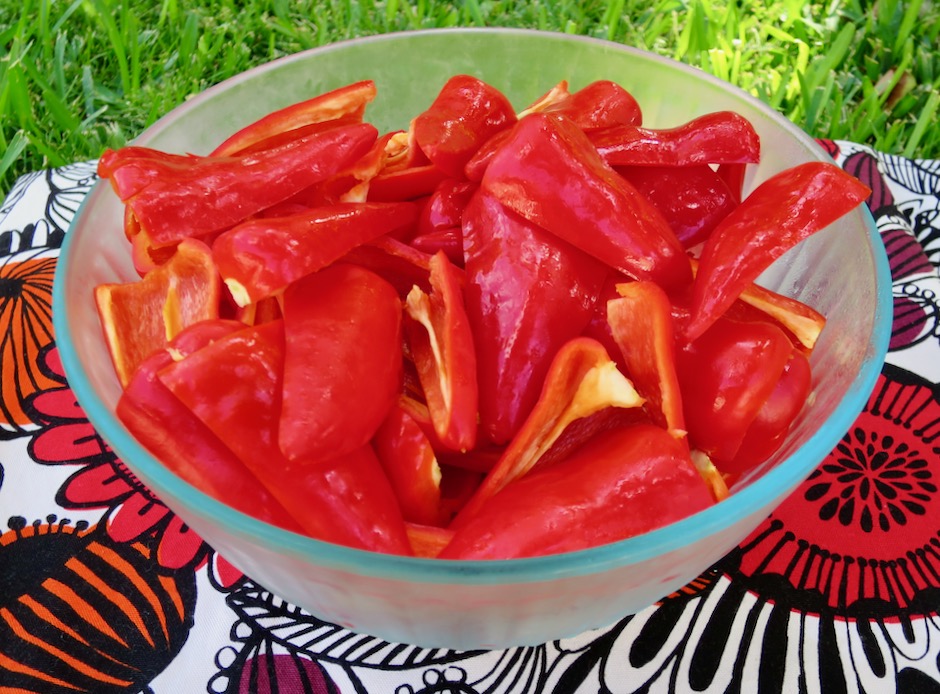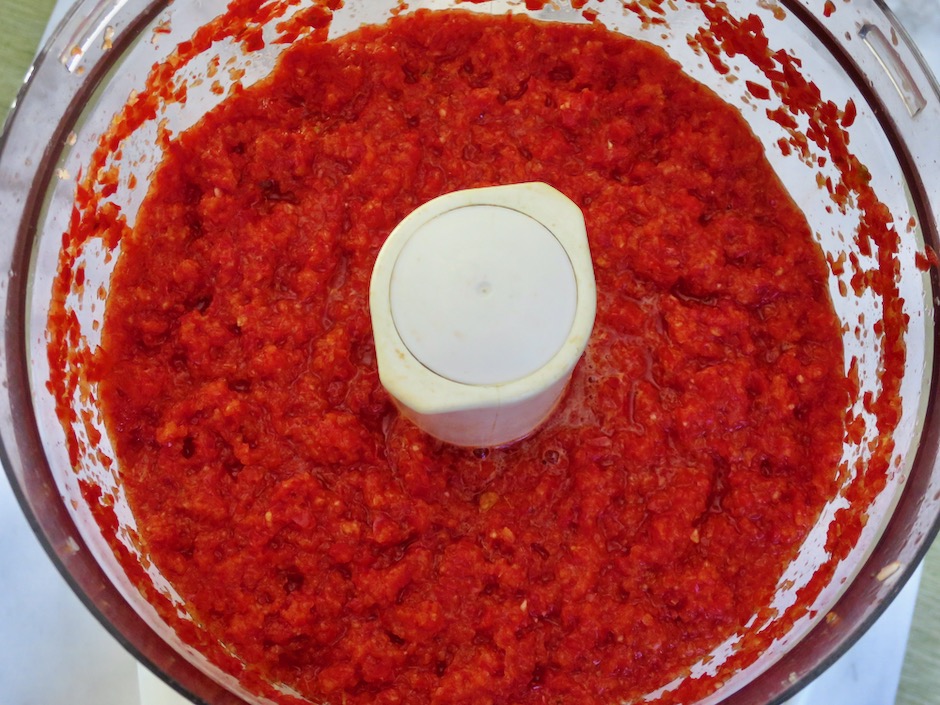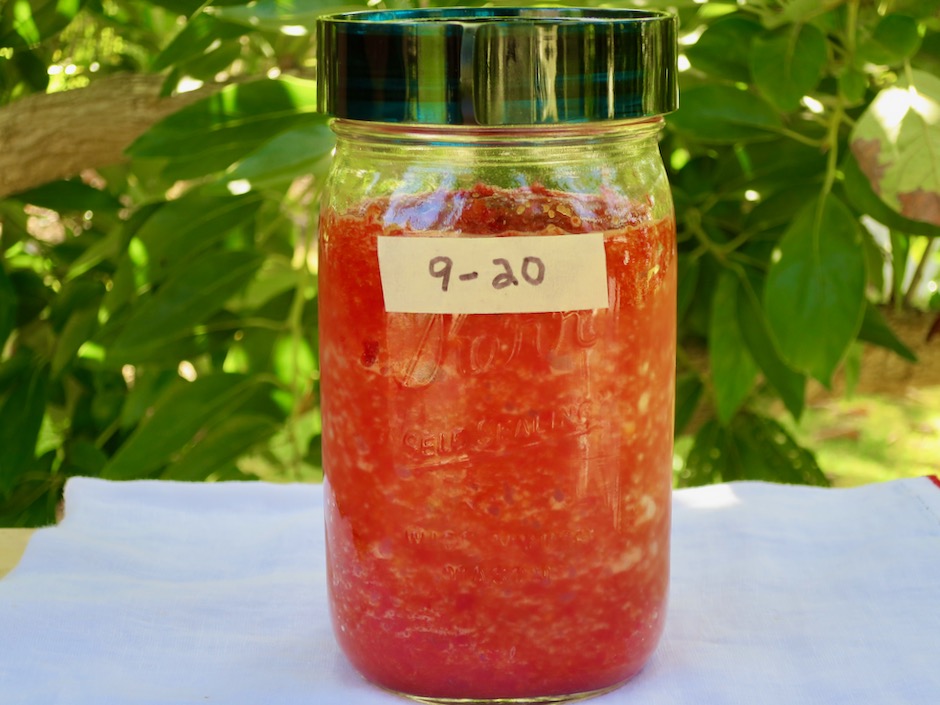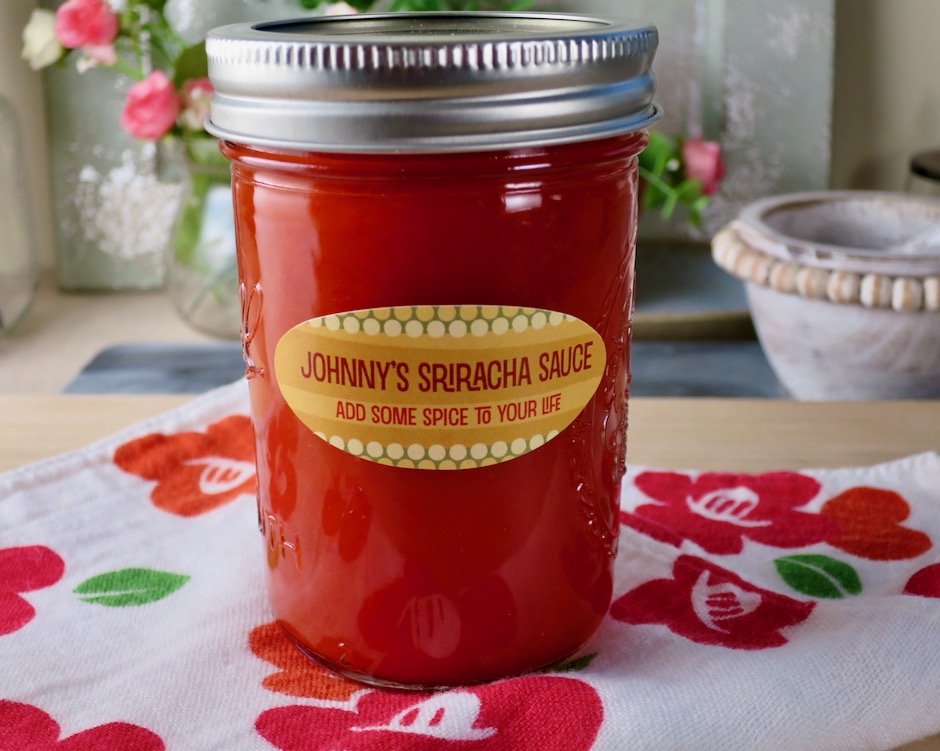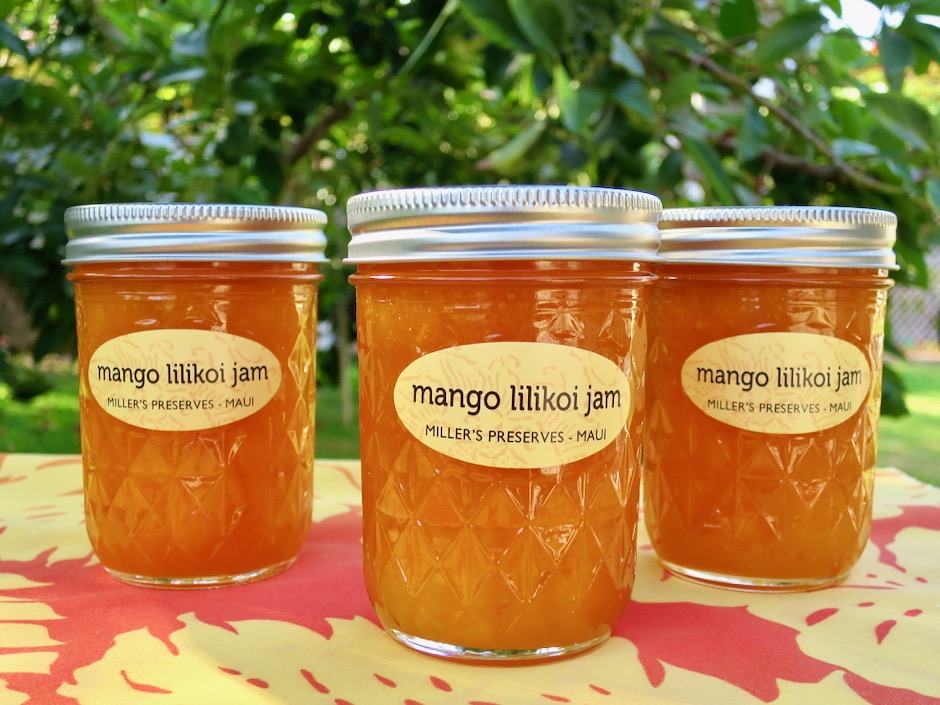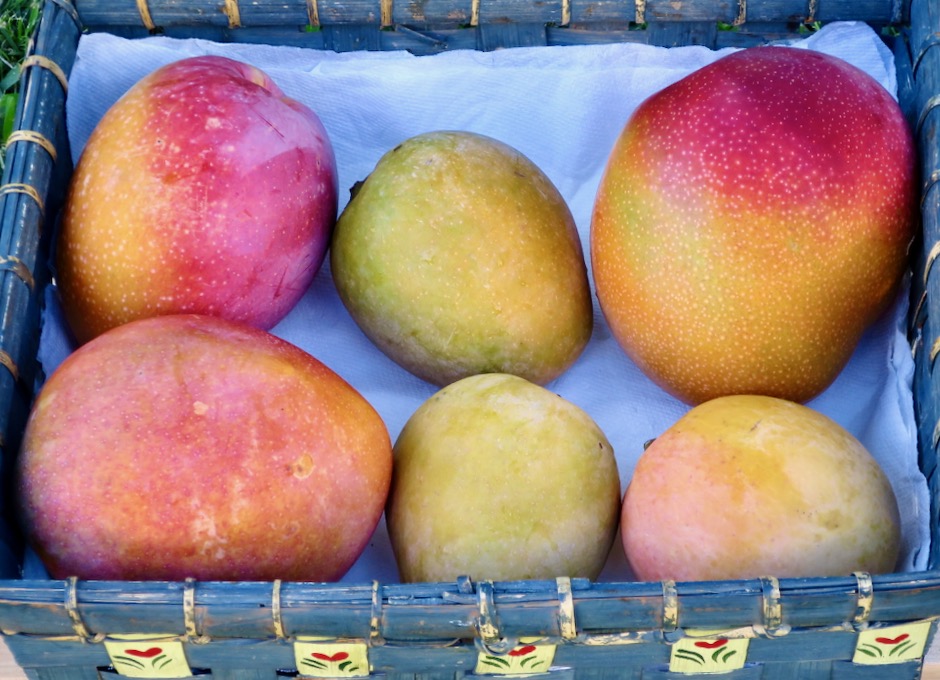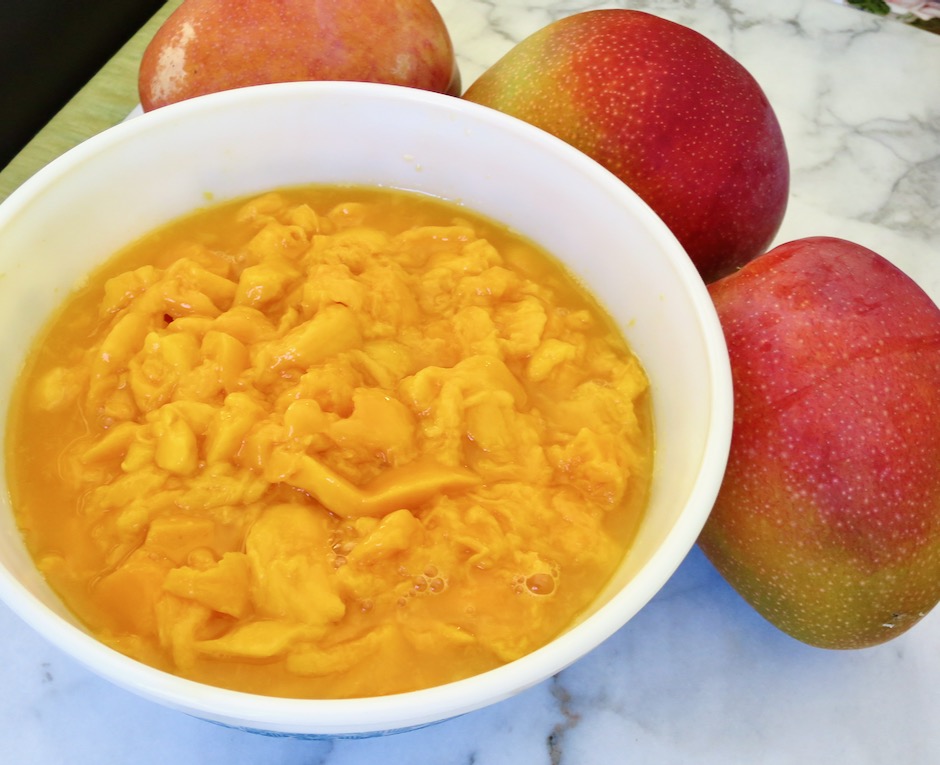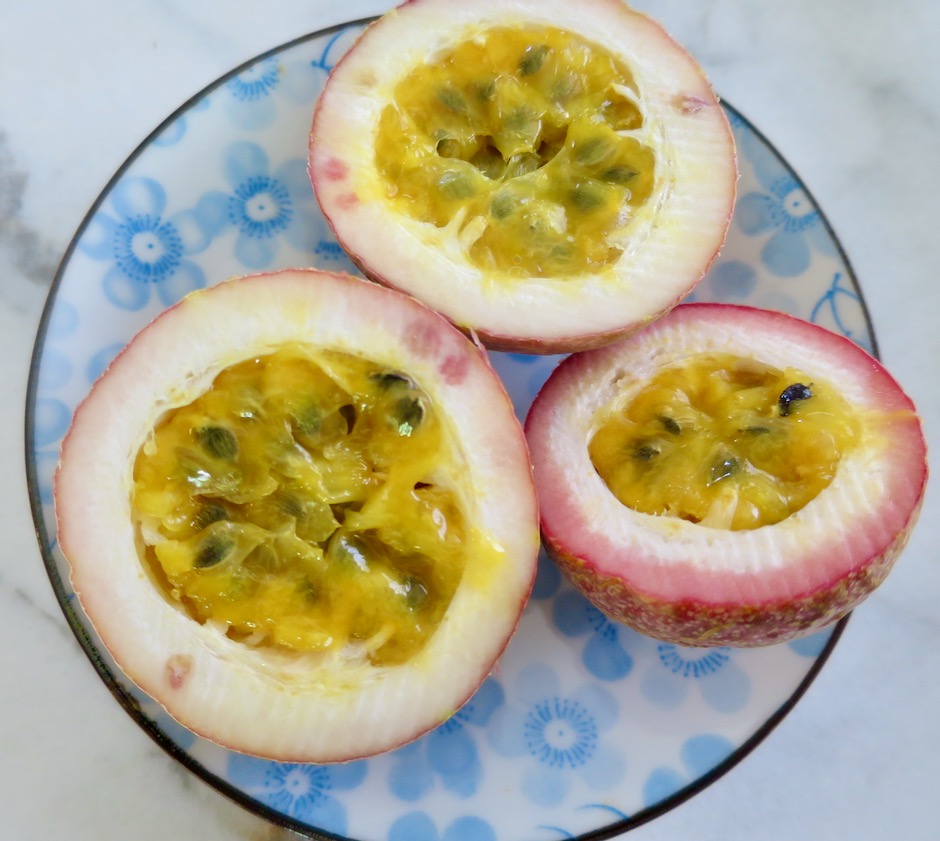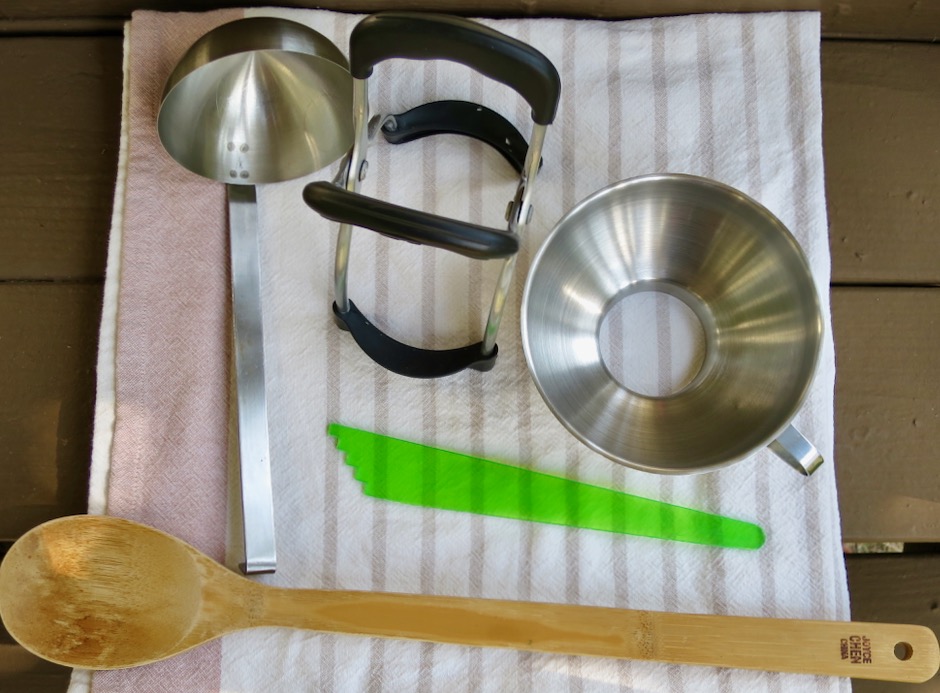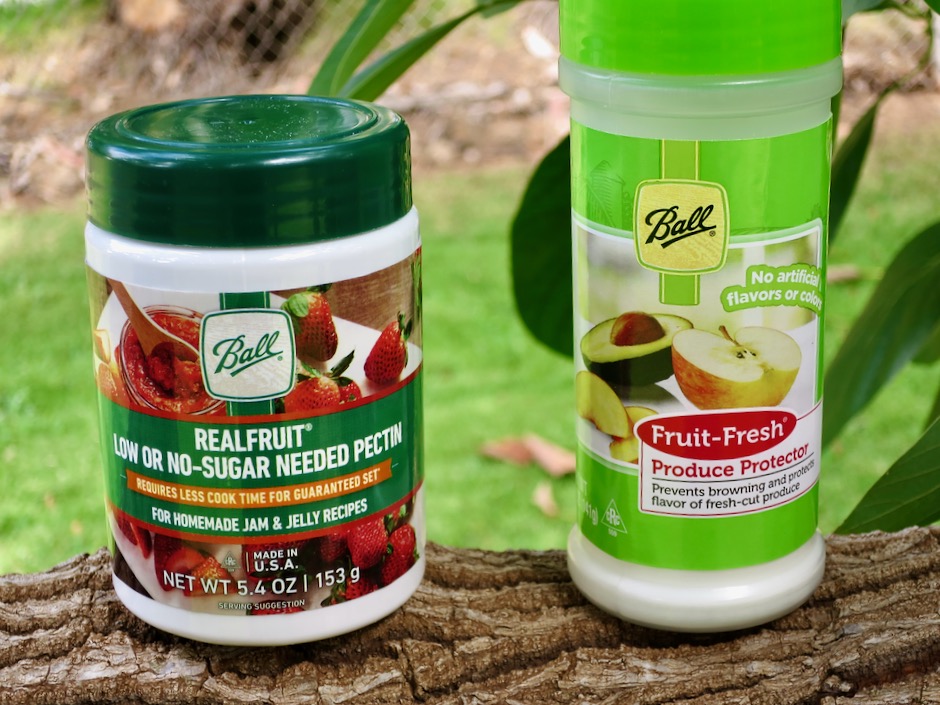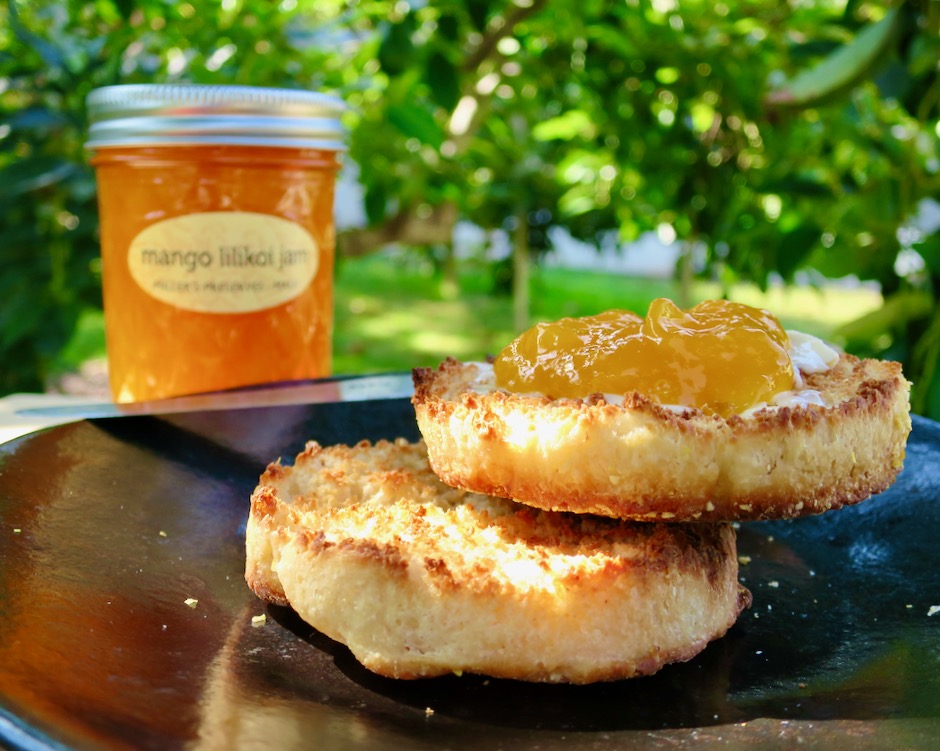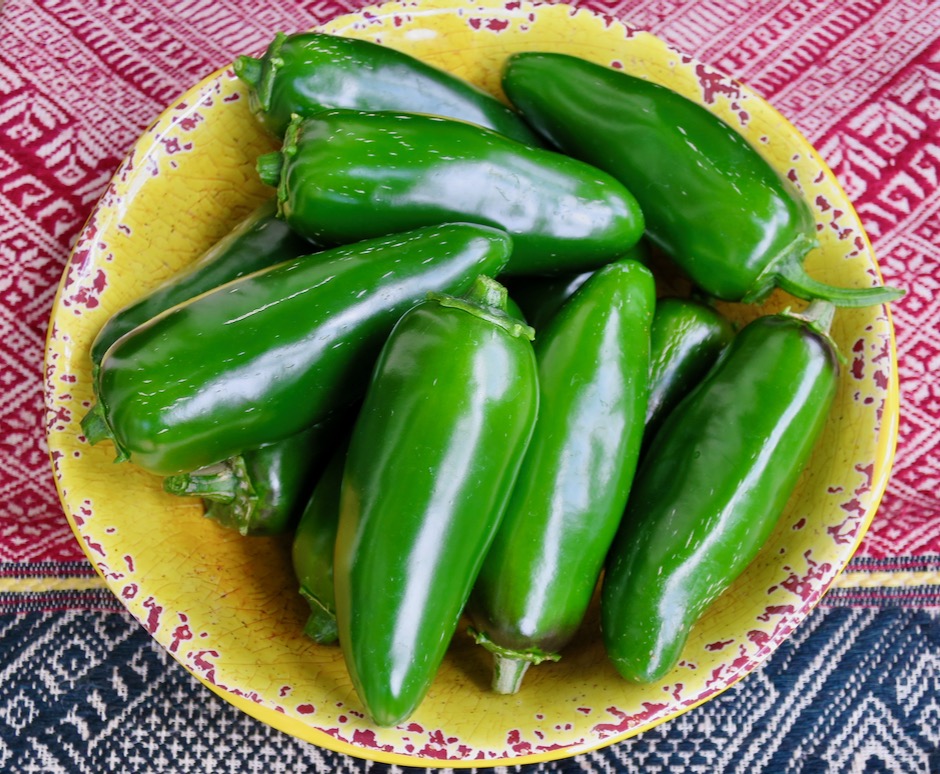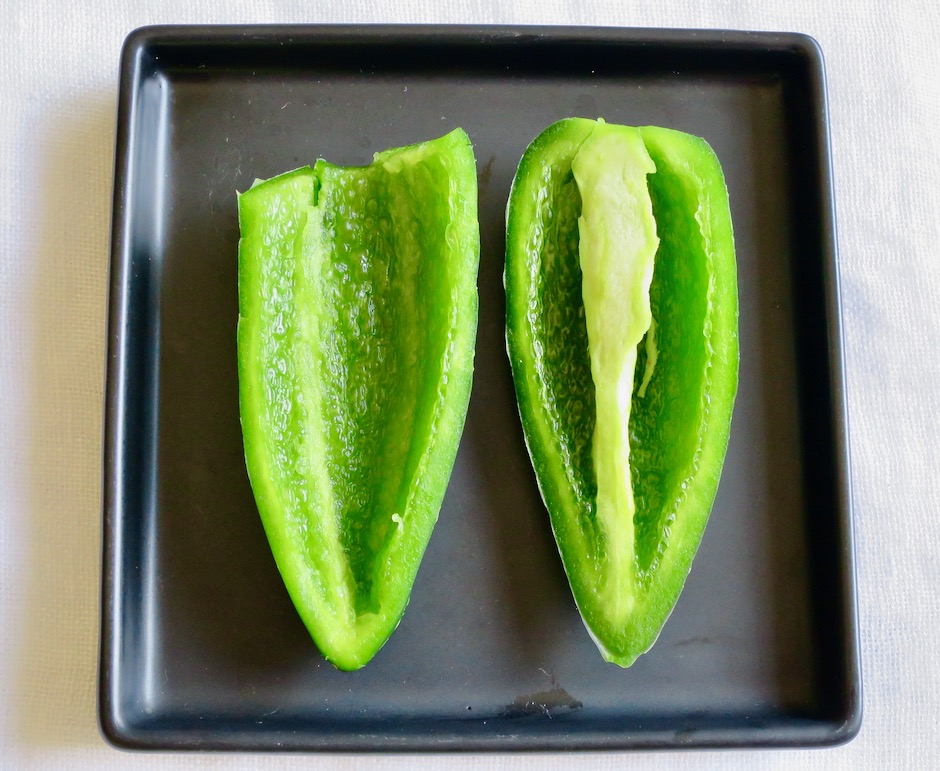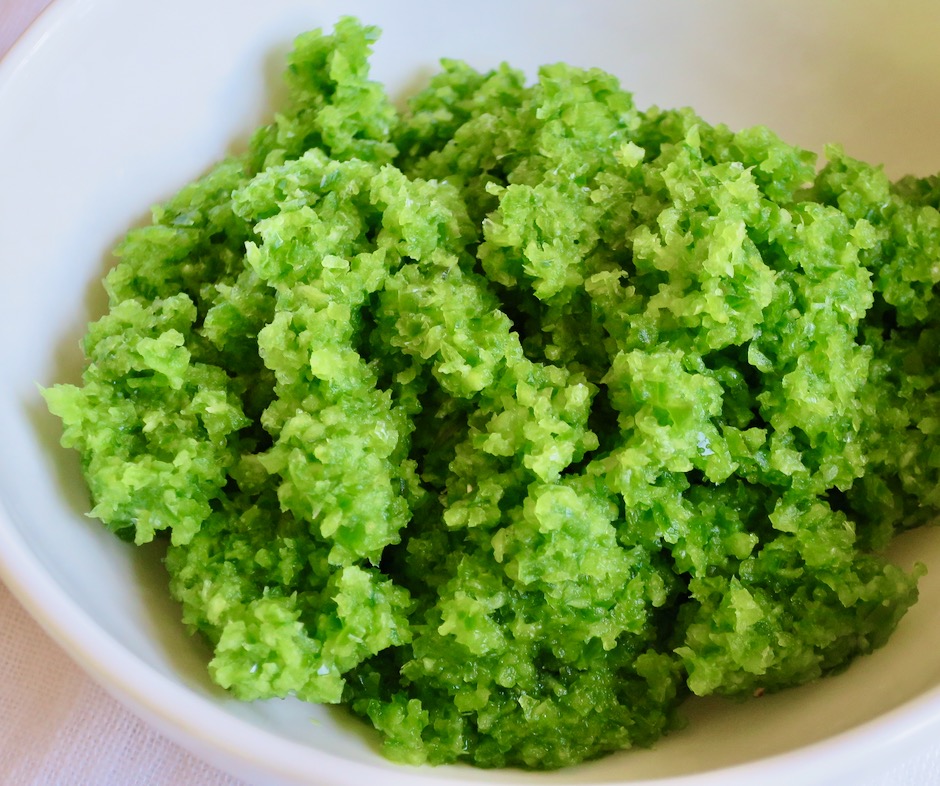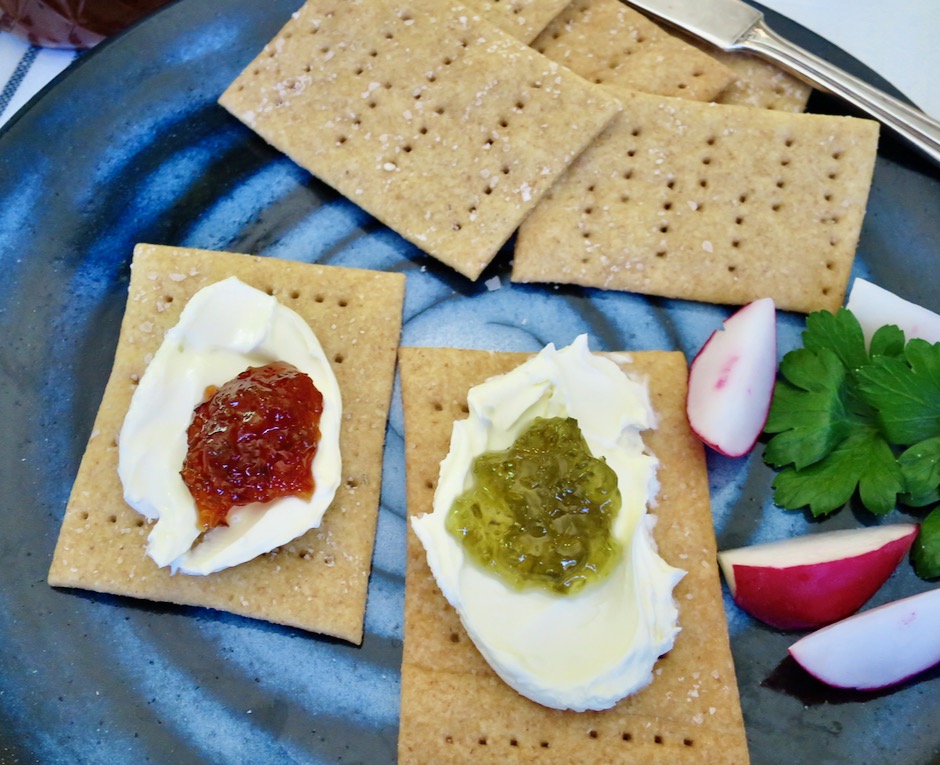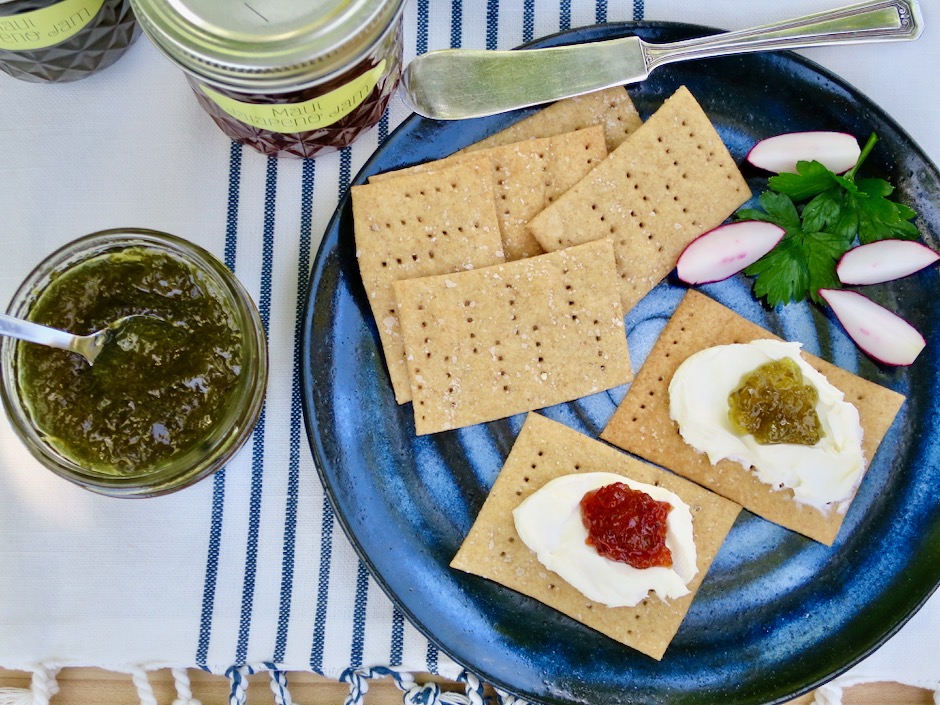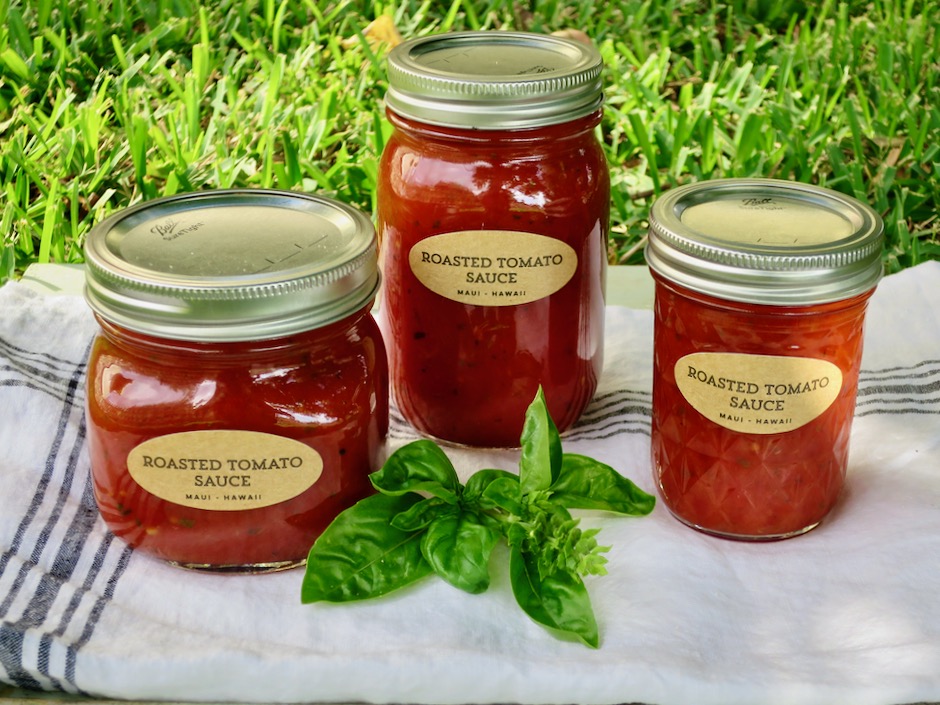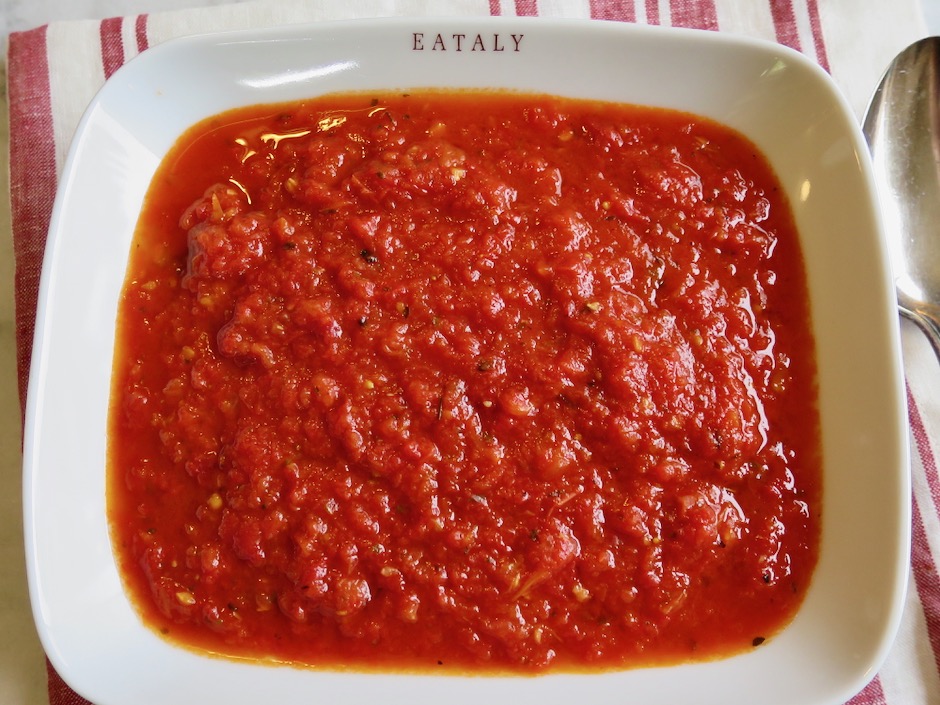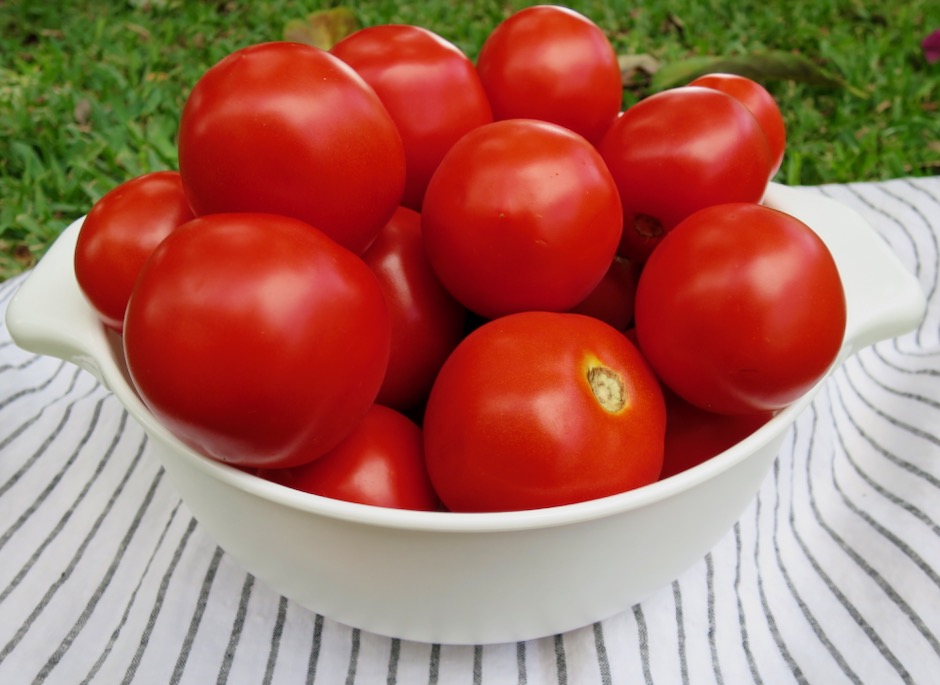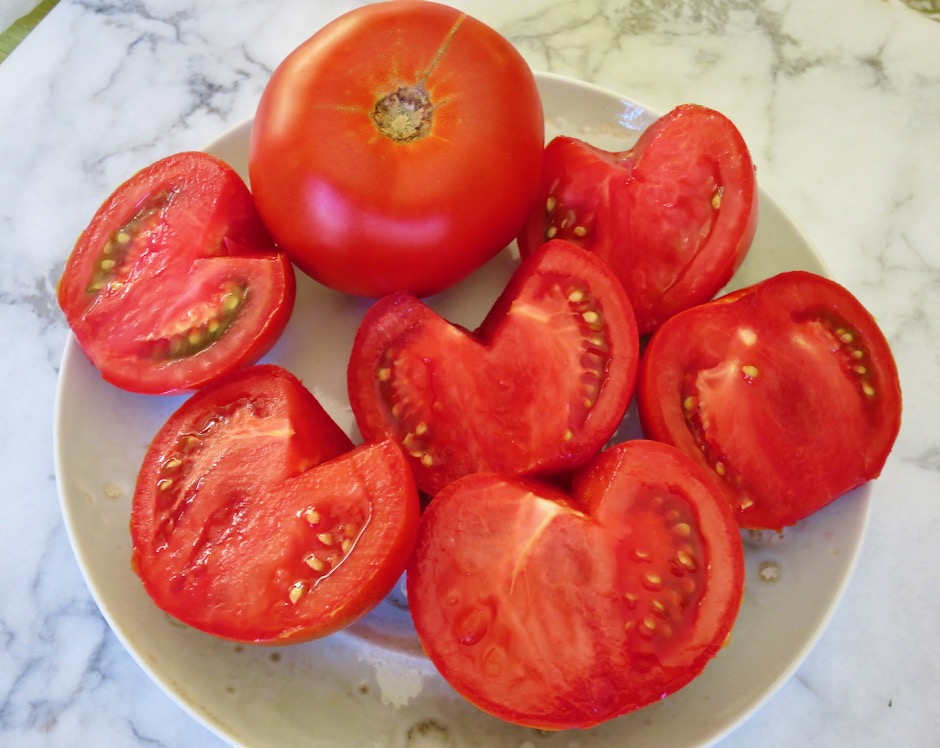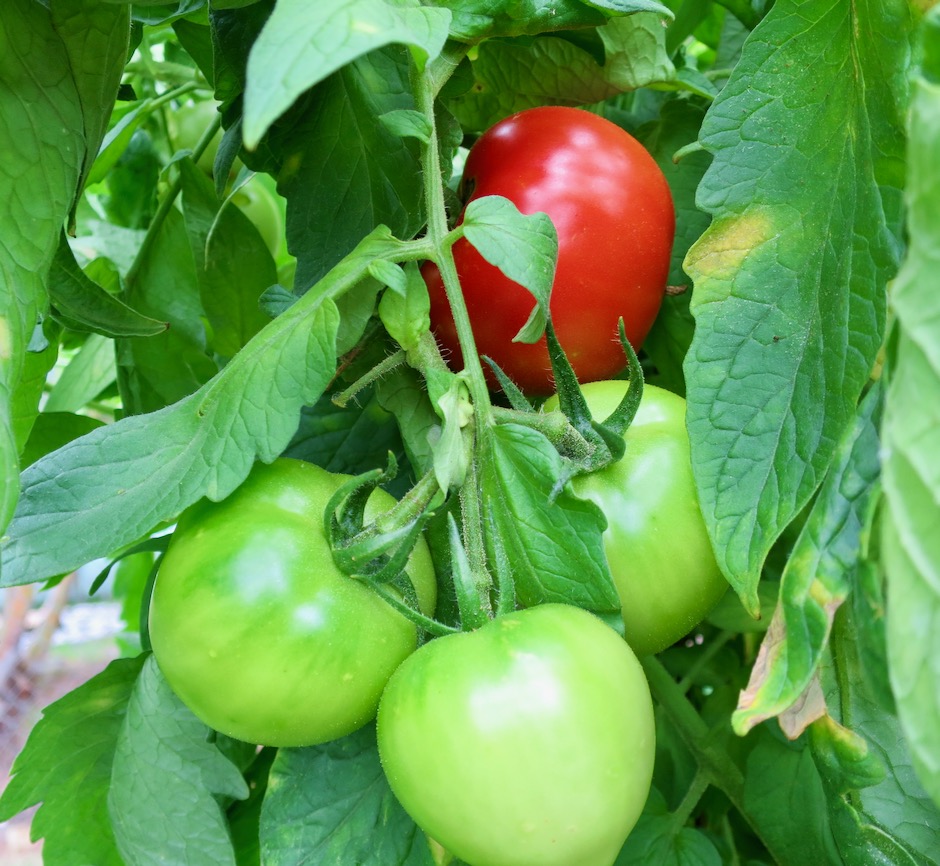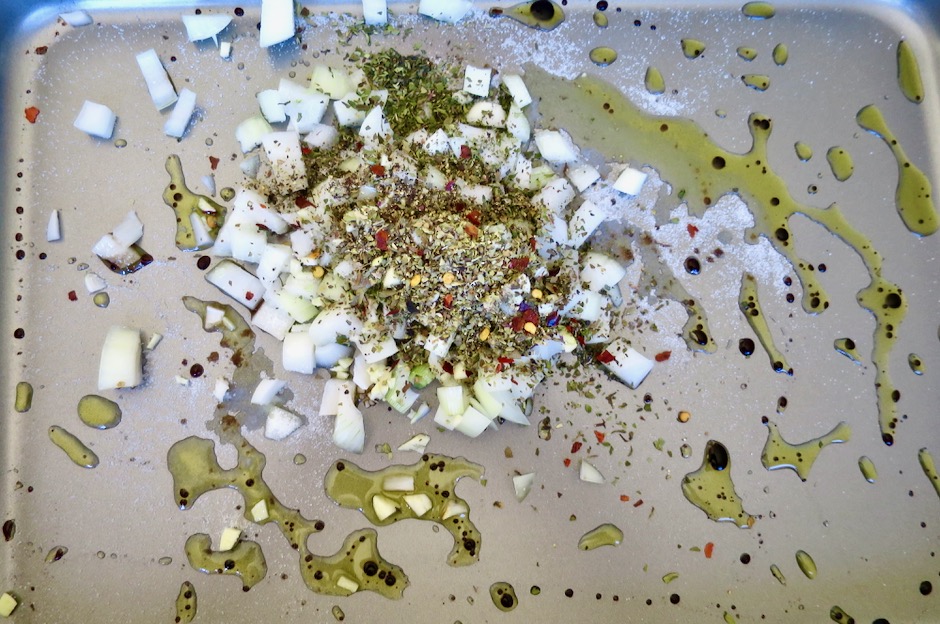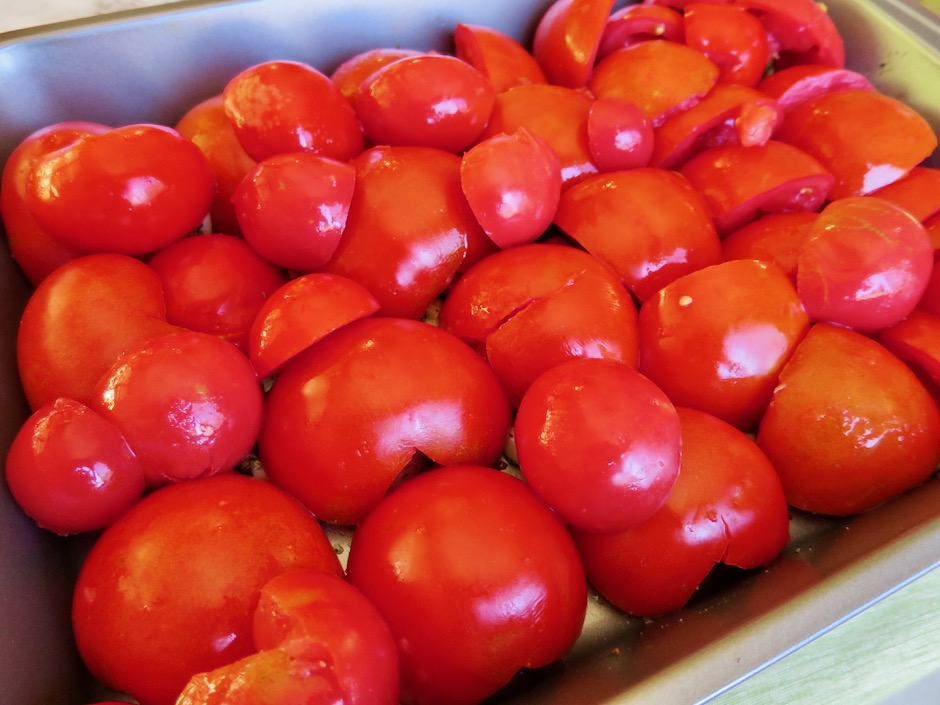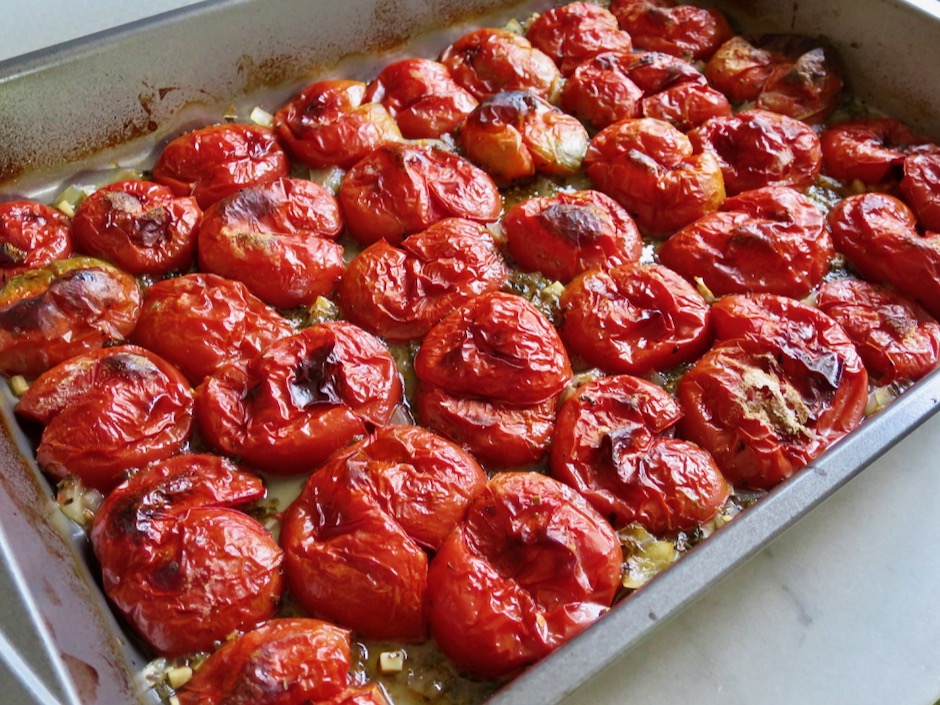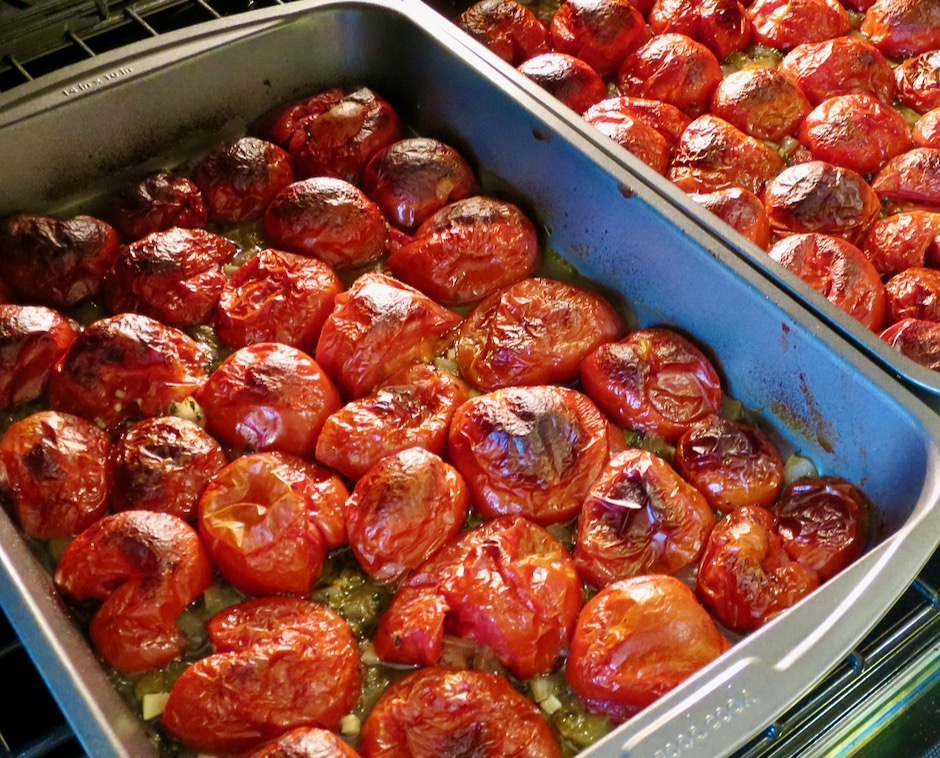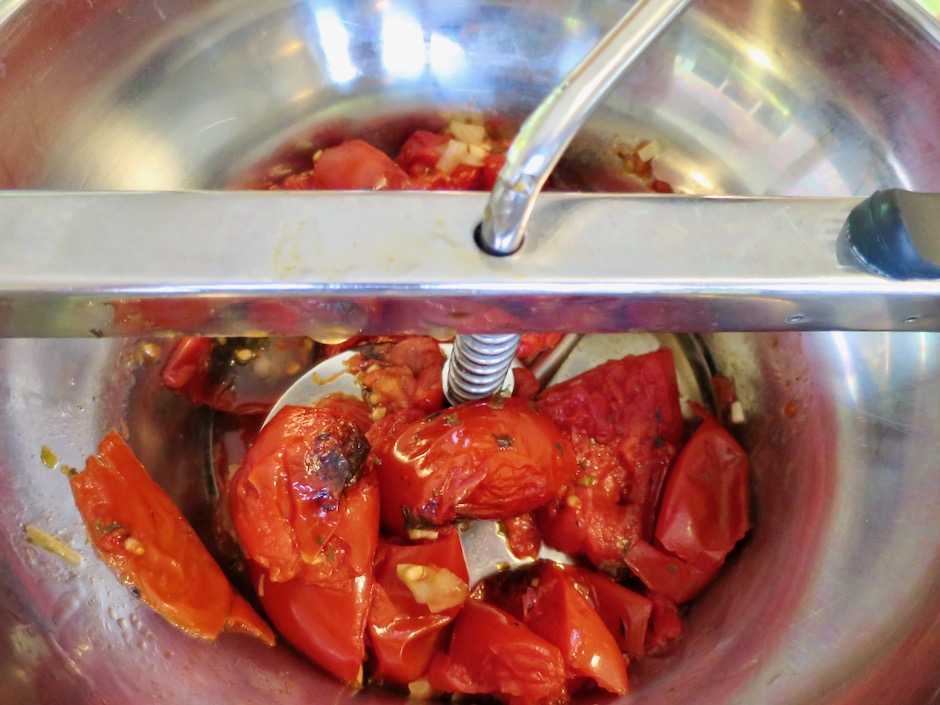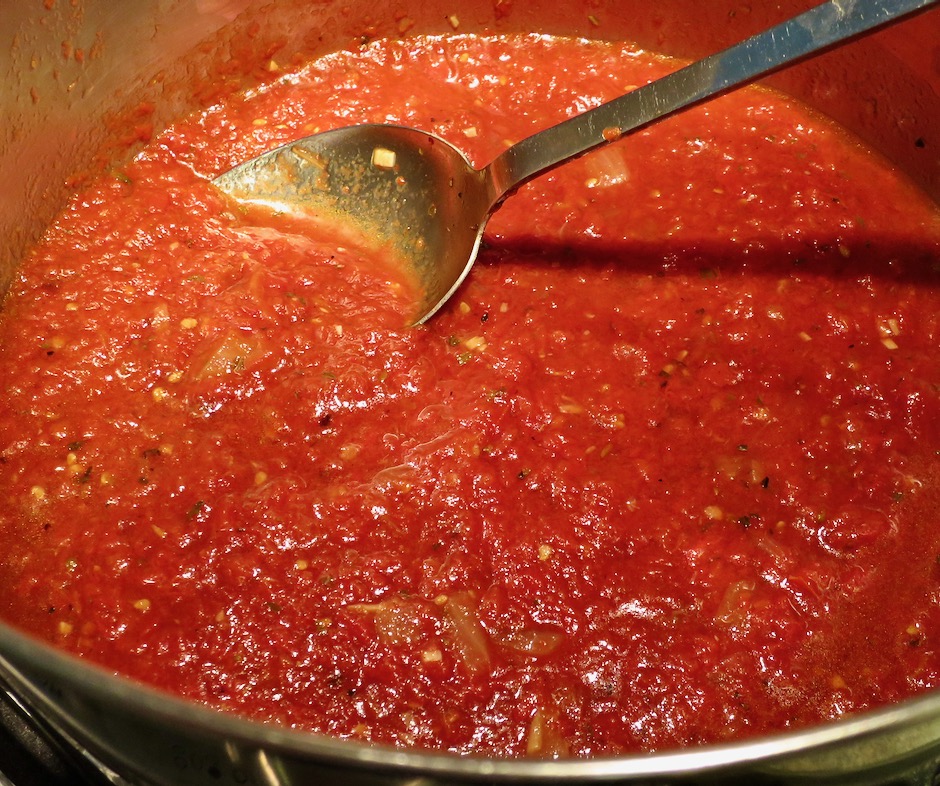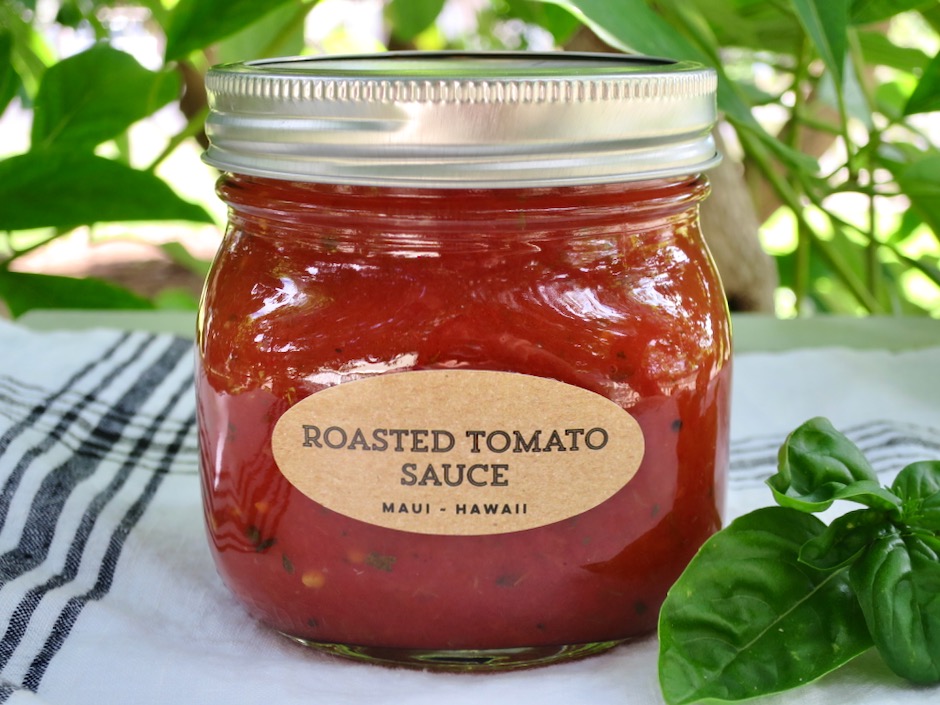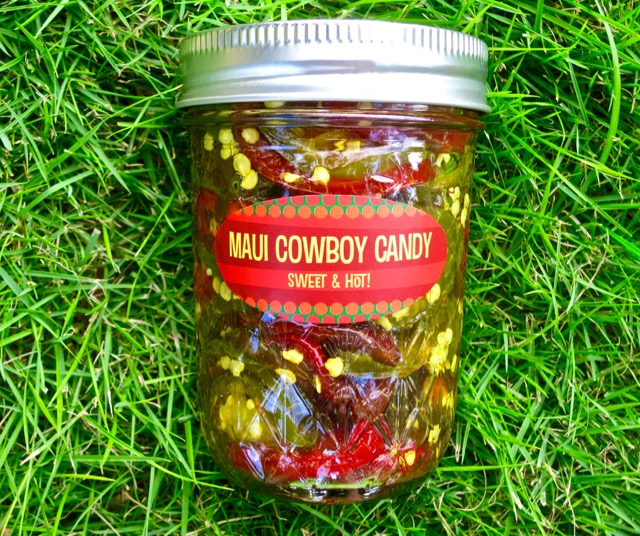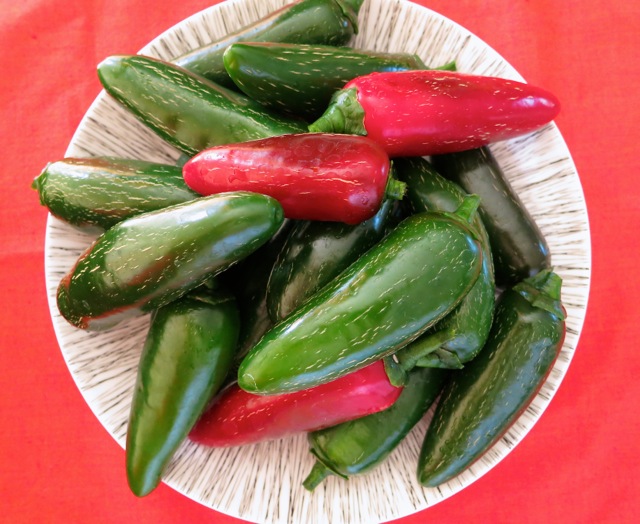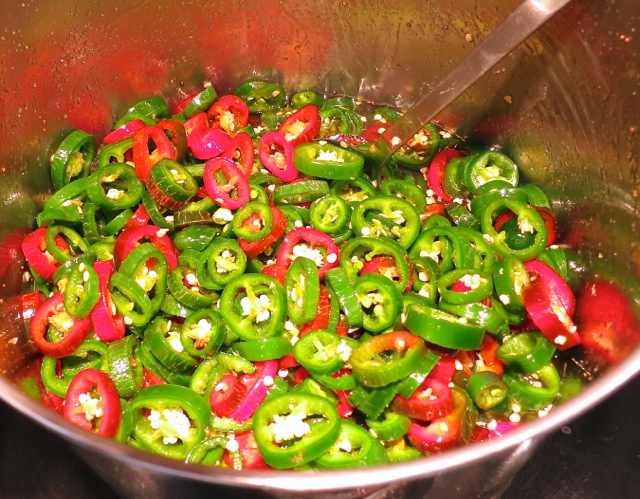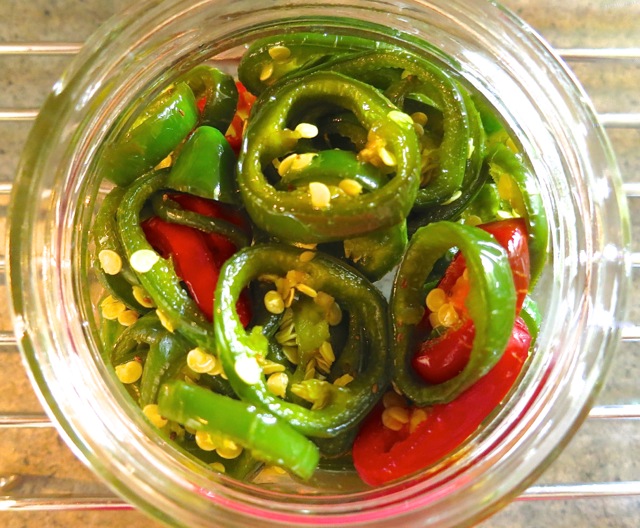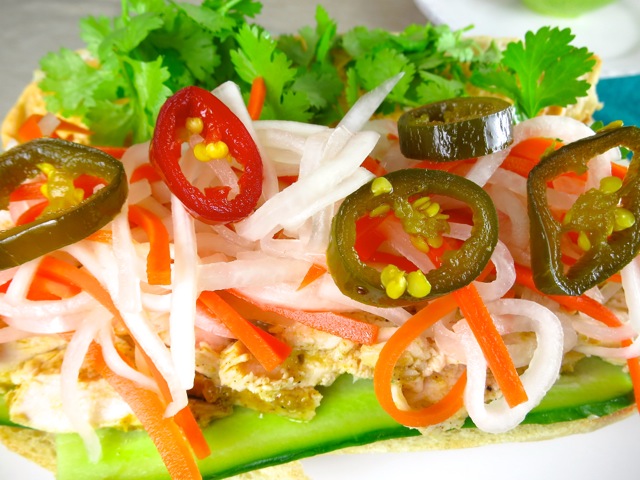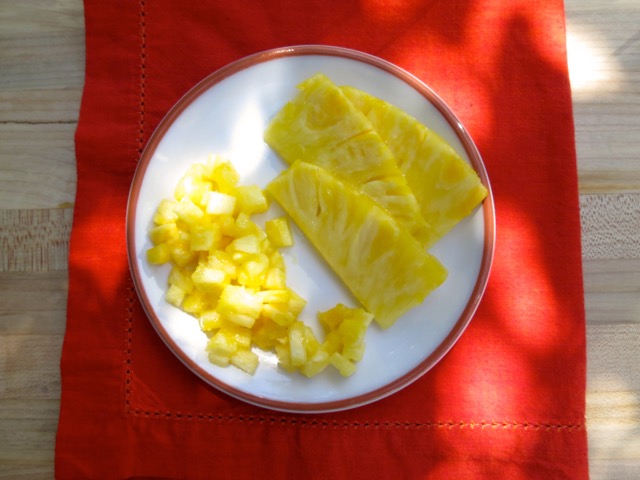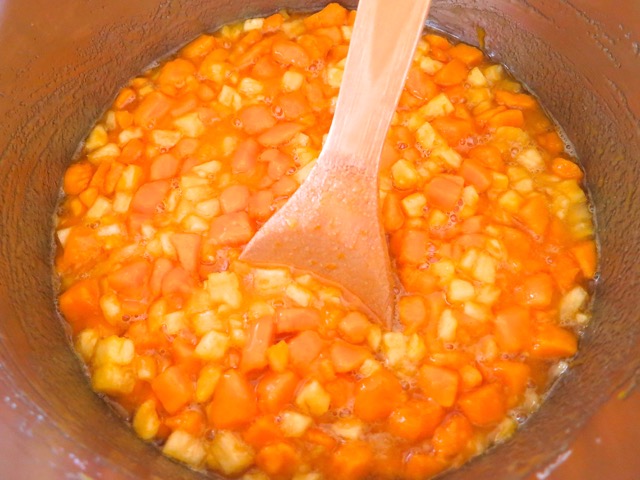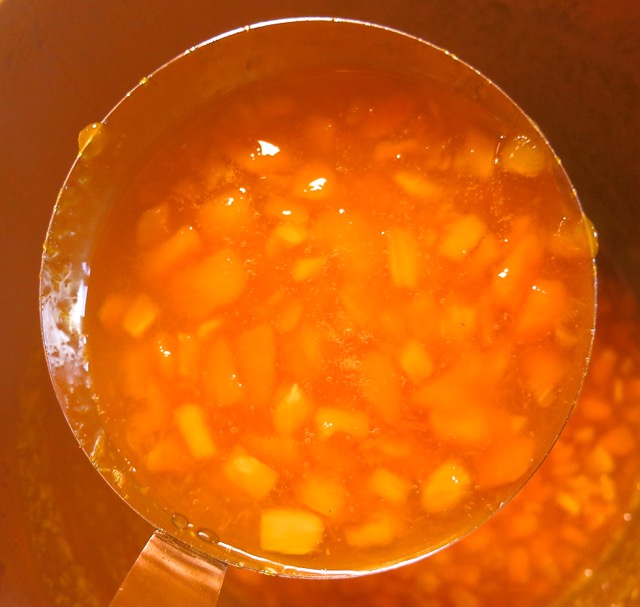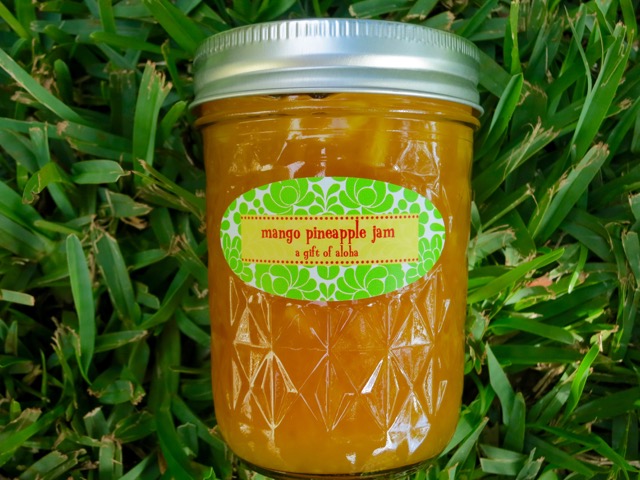This recipe has two versions: a long one and a not so long one. The long version is a labor of love involving growing your own Fresno peppers, specifically the Flaming Flare variety. It is notably hotter and more productive than other Fresnos. As this option is not practical for everyone, we’ll skip to the short version in which you purchase fresh Fresnos from your market. This sauce will bear a resemblance to the widely available Huy Fong’s rooster sauce (made with red, ripe jalapeños) but it has brighter and fresher flavors.
We had a very successful crop of Fresnos. They are beautiful peppers that grow upright. And their name says it all, Flaming Flare.
The peppers are halved and seeded before proceeding with the recipe.
The seeded and stemmed peppers, garlic, sugar and salt are pulsed together in the food processor until finely chopped. This mixture goes into a clean quart mason jar. It will ferment for about seven or eight days.
Place a small piece of tape at the upper most limit of the pepper mixture with the date so you can monitor the progress of fermentation. Check the jar each day and stir the contents. Little bubbles will start forming by day three or four and the level of the mixture will rise above the piece of tape. After seven or eight days, the mixture will cease rising in volume and the fermentation is complete.
- 1¾ pounds fresh Fresno peppers
- 6 garlic cloves, peeled
- 4 tablespoons light brown sugar
- 1 tablespoon kosher salt
- 1¼ cups distilled white vinegar
- Snip off green stems from peppers. Slice peppers in half lengthwise and remove all the seeds, taking care to leave ribs and pith intact (that's where the heat lies). Use disposable gloves when handling hot peppers.
- When all the peppers have been seeded, place them in the bowl of a food processor along with the garlic, brown sugar, and salt. Pulse until pepper mixture is finely chopped, scraping down the sides as necessary. Transfer mixture to a clean quart mason jar and cover (we like the Easy Fermenter Lid). Place a small piece of tape on the jar at the upper most point of the pepper mixture so you can monitor the progress of fermentation. Check jar each day and stir contents. Little bubbles should start forming by day 3 or 4. You will notice the level of the mixture rising above the piece of tape. After 7 or 8 days the mixture will cease rising in volume.
- Transfer pepper mixture to a blender. Add the vinegar and blend on highest setting until completely smooth, about 2-3 minutes. If you are planning to can the sauce, prepare your boiling water bath canner and place 4 8-ounce mason jars inside the canner. Bring water to a simmer, wash lids and rings and set aside.
- Transfer mixture to a medium saucepan and bring to a boil over medium high heat, stirring often. Reduce heat and simmer for 5 minutes Turn off heat. Remove jars from canner pot and ladle hot sauce into jars leaving ¼-inch headspace. Secure lids and rings, finger tight. Place jars in canner, cover pot and bring water to a boil. Process for 15 minutes. Turn off heat and leave jars in water an additional 5 minutes. Carefully remove jars from canner and transfer to a kitchen towel or cooling rack. Let cool for 24 hours. Remove rings and check lid seal. Sauce is shelf stable and can be stored for 18 months. Refrigerate after opening.
- Note: Alternatively, you may skip the canning process and transfer the pepper mixture back to a quart mason jar and store in the refrigerator for up to 6 months. You may also use red ripe jalapeños if Fresnos are not available.
